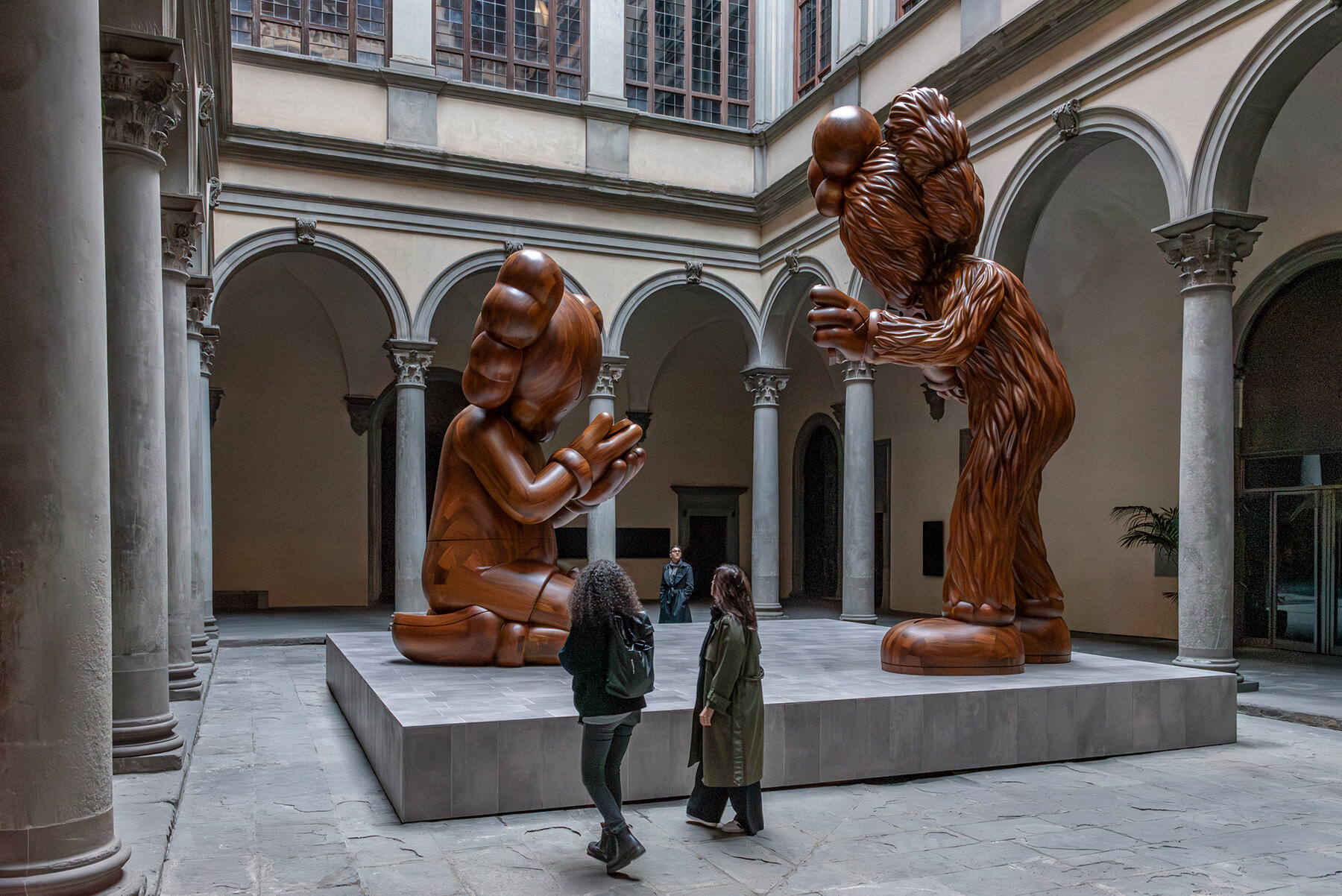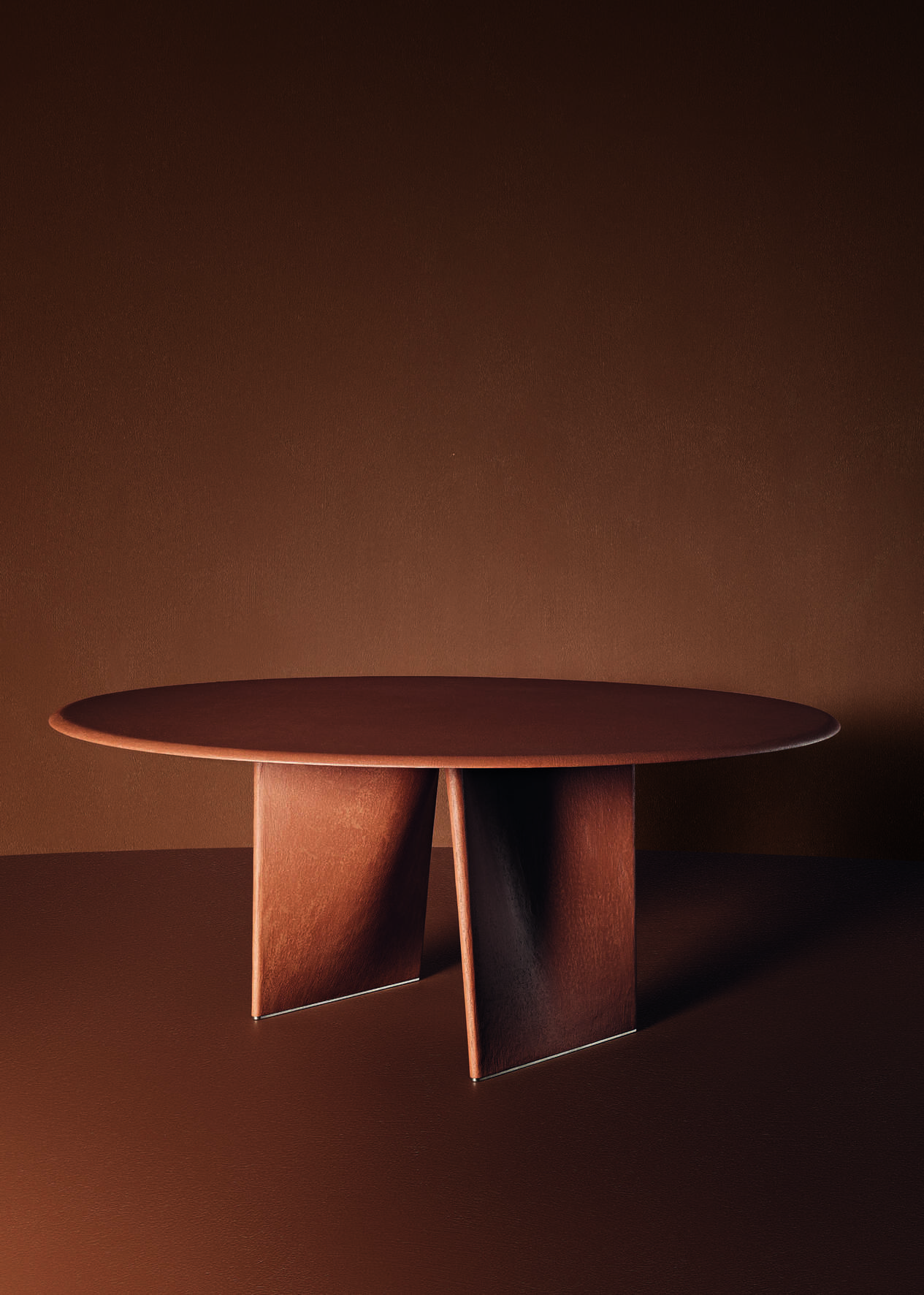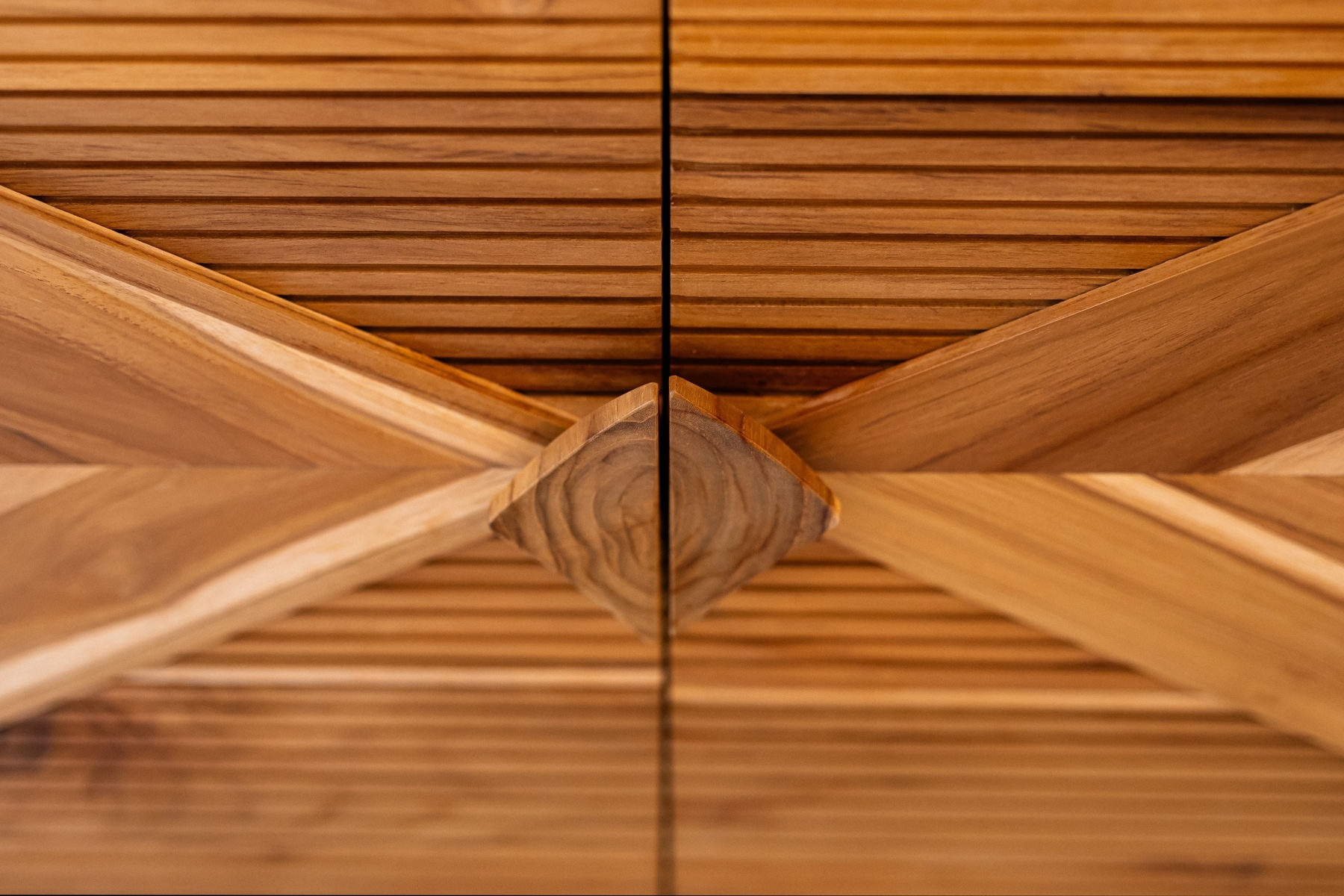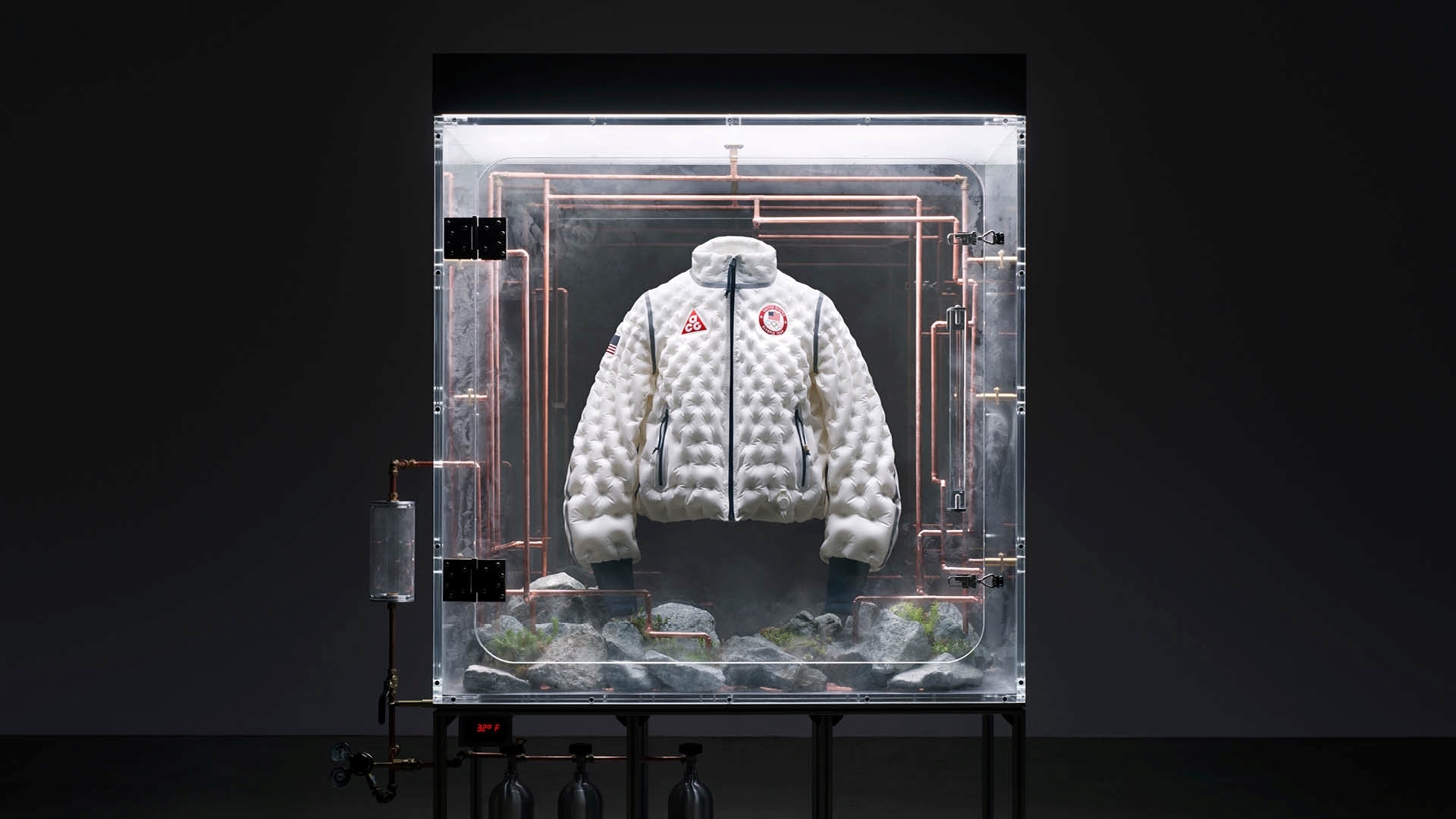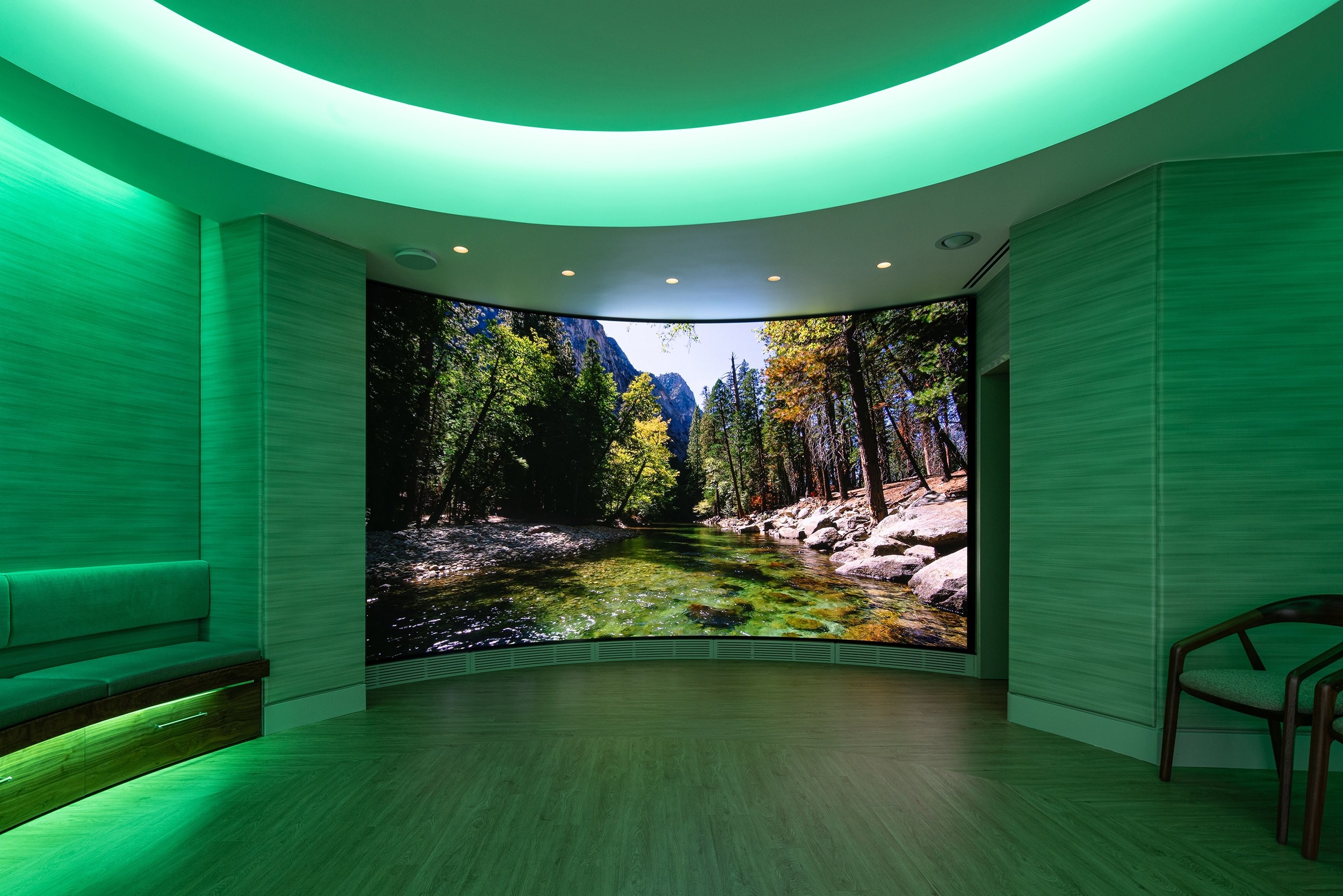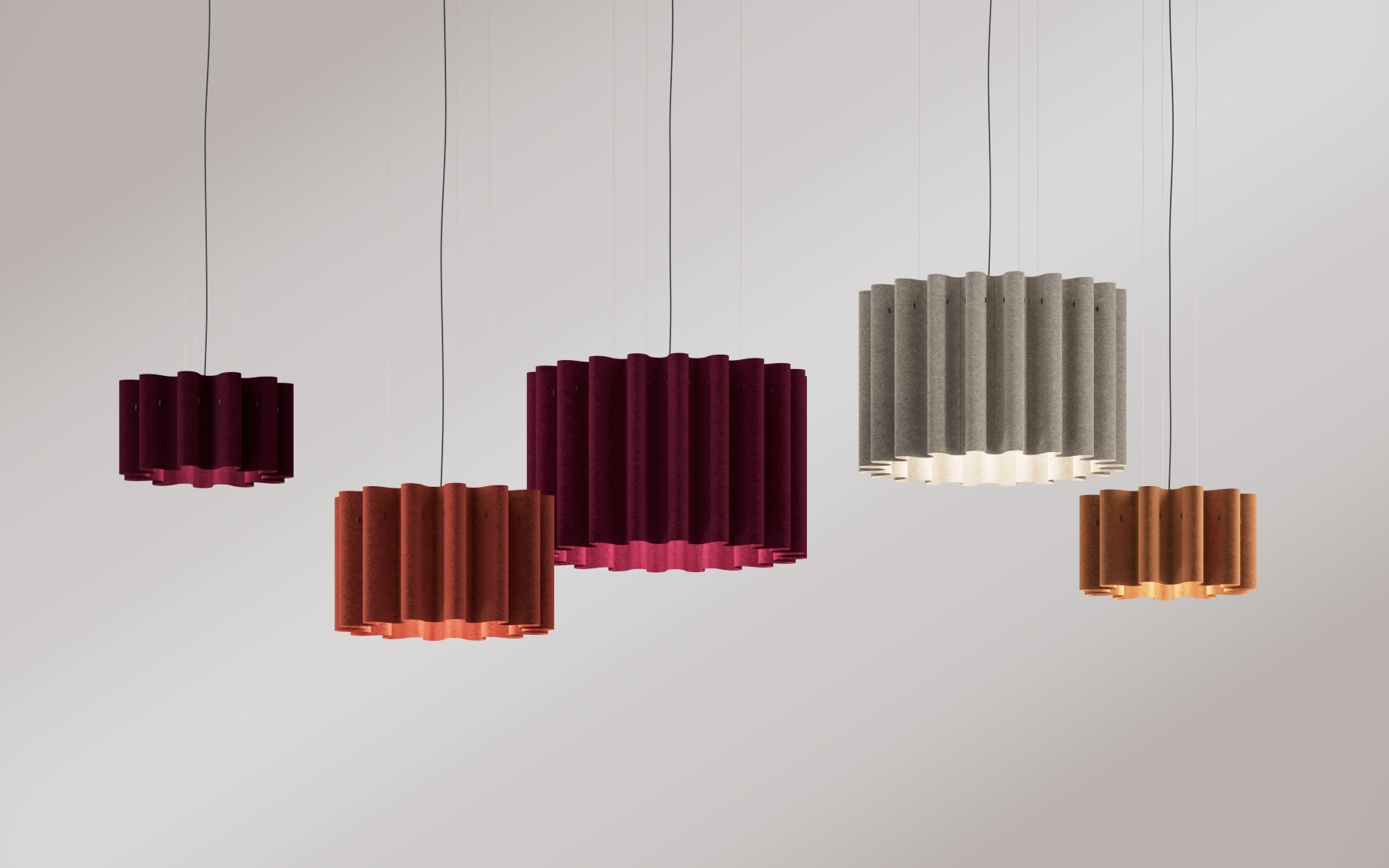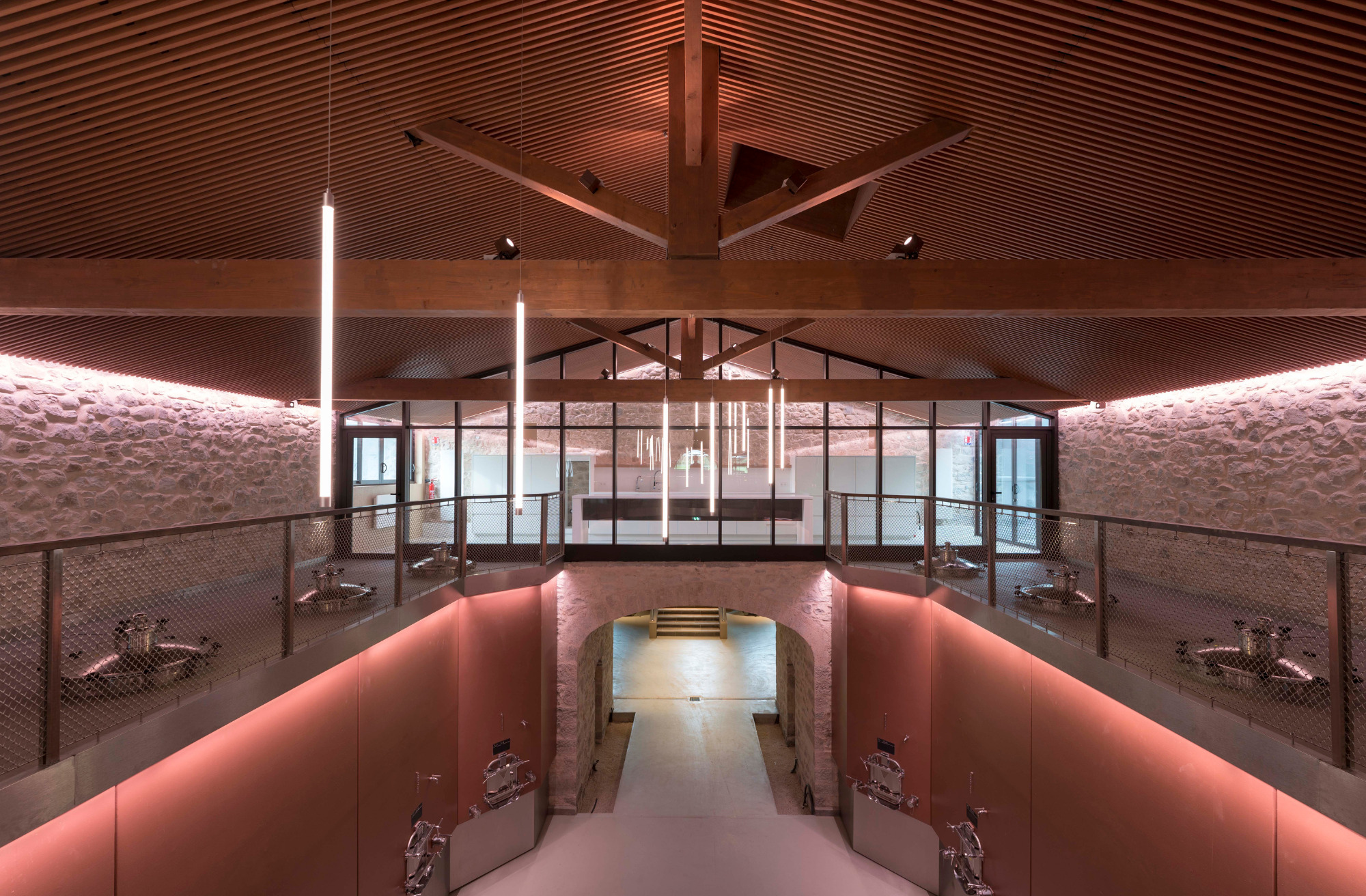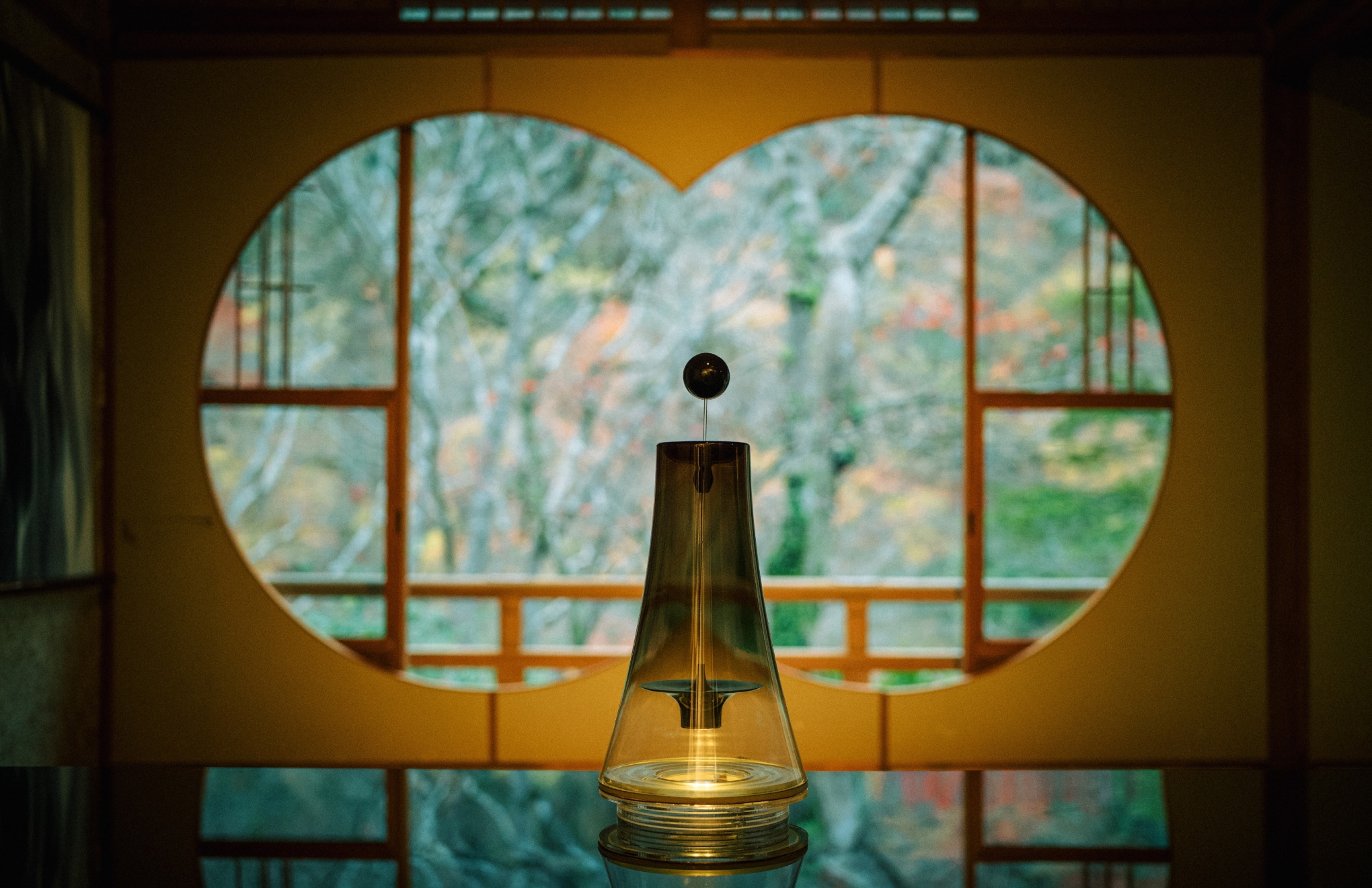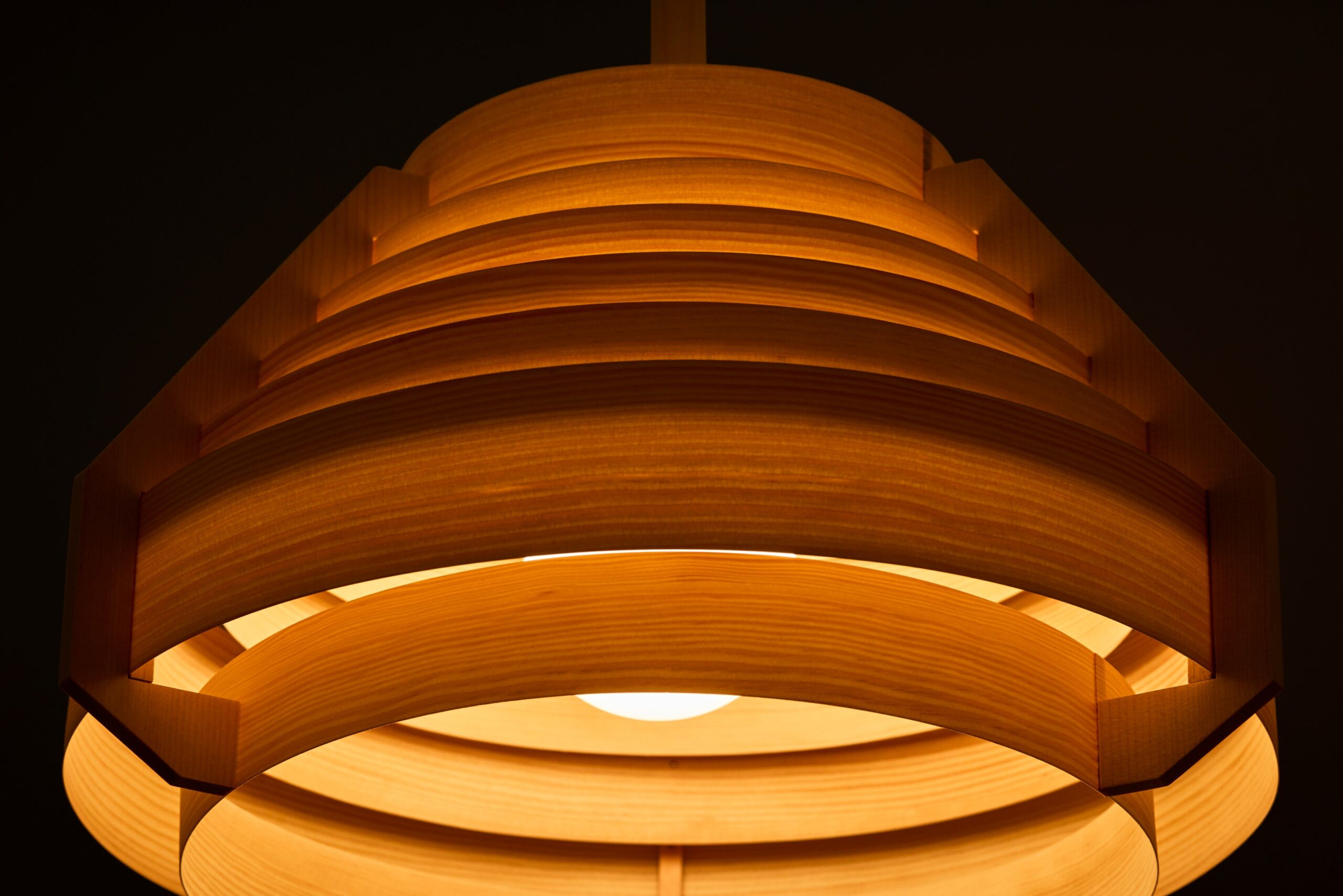Since the dawn of time, light has been used to illuminate living and working environments. As time went by and technology progressed, lighting has achieved numerous new functions, permanently changing the way we think about illumination. An increasing number of institutions are discovering the healing powers of the light. Lightning can influence mood, impact physical health, upcycle waste, and reduce electricity consumption.
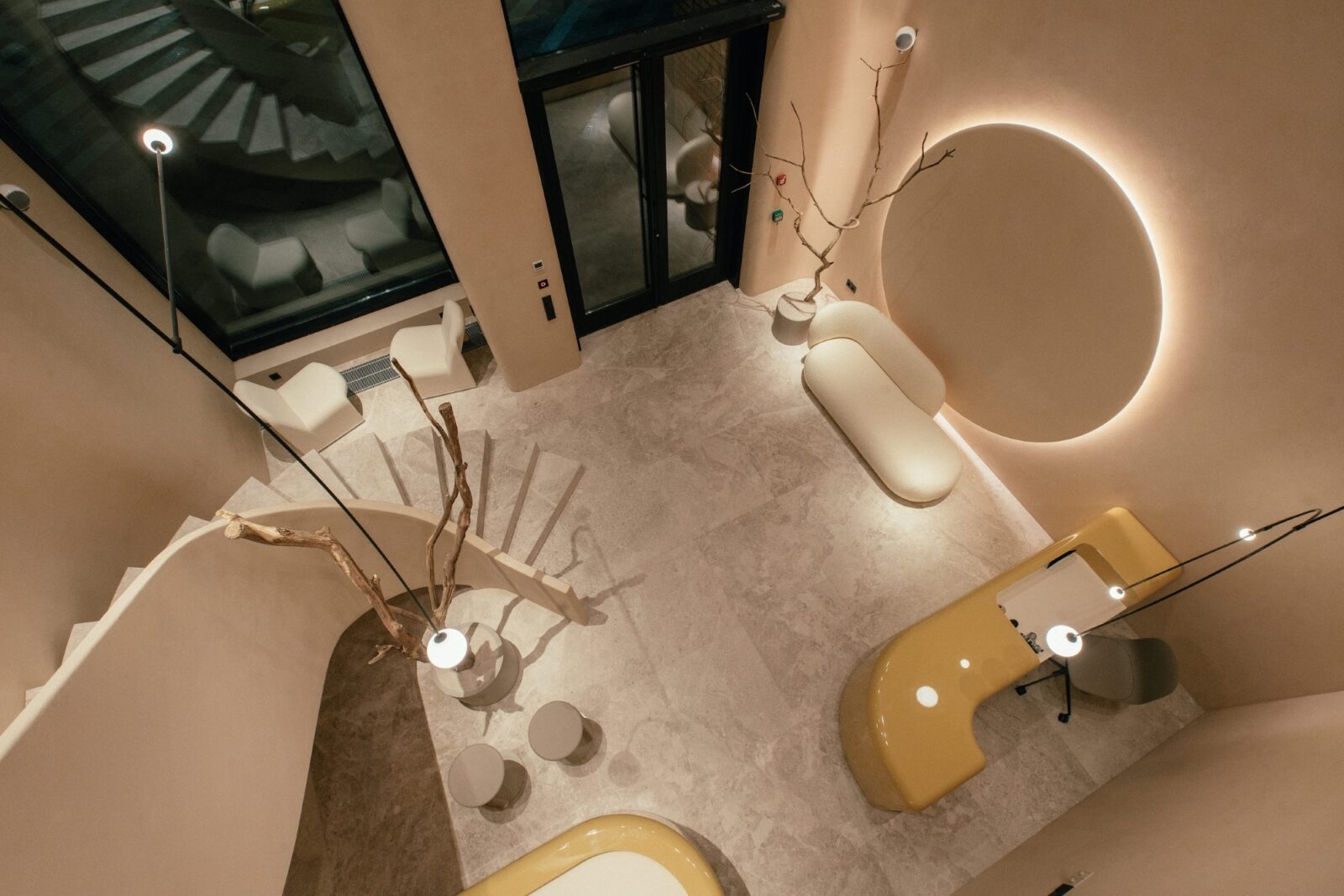
Circadian Rhythm
One way to use light to improve your overall health is to adapt it to your natural circadian rhythm. The circadian lighting uses cold light during the day and warmer light in the evening. This technology, for instance, is often used in computers or smartphones that switch to softer light in night mode, signaling the body to relax and prepare for sleep. The circadian lighting design works in harmony with the human biorhythm to create a healthier environment. It’s often used to medically treat the seasonal affective disorder (SAD), a type of depression caused by the arrival of fall or winter. Light boxes provide a therapeutic dose of light to treat this disorder. The box mimics outdoor light to cause a chemical change in the brain to awaken the patient. The morning routine for SAD includes 20 to 30 minutes of sitting in front of a box that emits 10,000 lux. Looking at the light directly is not advisable, but the patient can conduct daily chores, such as having breakfast, reading a book, or checking emails, under the light box.
Mood therapy
Seasonal depression disorder is not the only disease treated with light boxes. The positive effects of light have been known to treat other types of depression, including major depression and perinatal depression. According to Dr. Richard S. Schwartz from Harvard Medical School:
“The effectiveness of light therapy is approximately the same as antidepressant medications, or popular forms of psychotherapy such as cognitive behavioral therapy.”
According to research, the light improves symptoms in 40-60% of people. Light therapy is particularly useful in treating pregnant or elderly people, considering that it has no side effects typical of many medications. The light can also help reduce stress in patients suffering from terminal illnesses and their families. The positive effects of light have led to the creation of healing spaces like the one in Virginia University’s Cancer Center. In 2023, the center opened an interactive room featuring spatial sound, changing LED lighting with DMX control, and a 4K LED video wall. The Healing Space offers an immersive and calming experience, allowing visitors to select nature-inspired audio and videos to enjoy in a serene atmosphere.
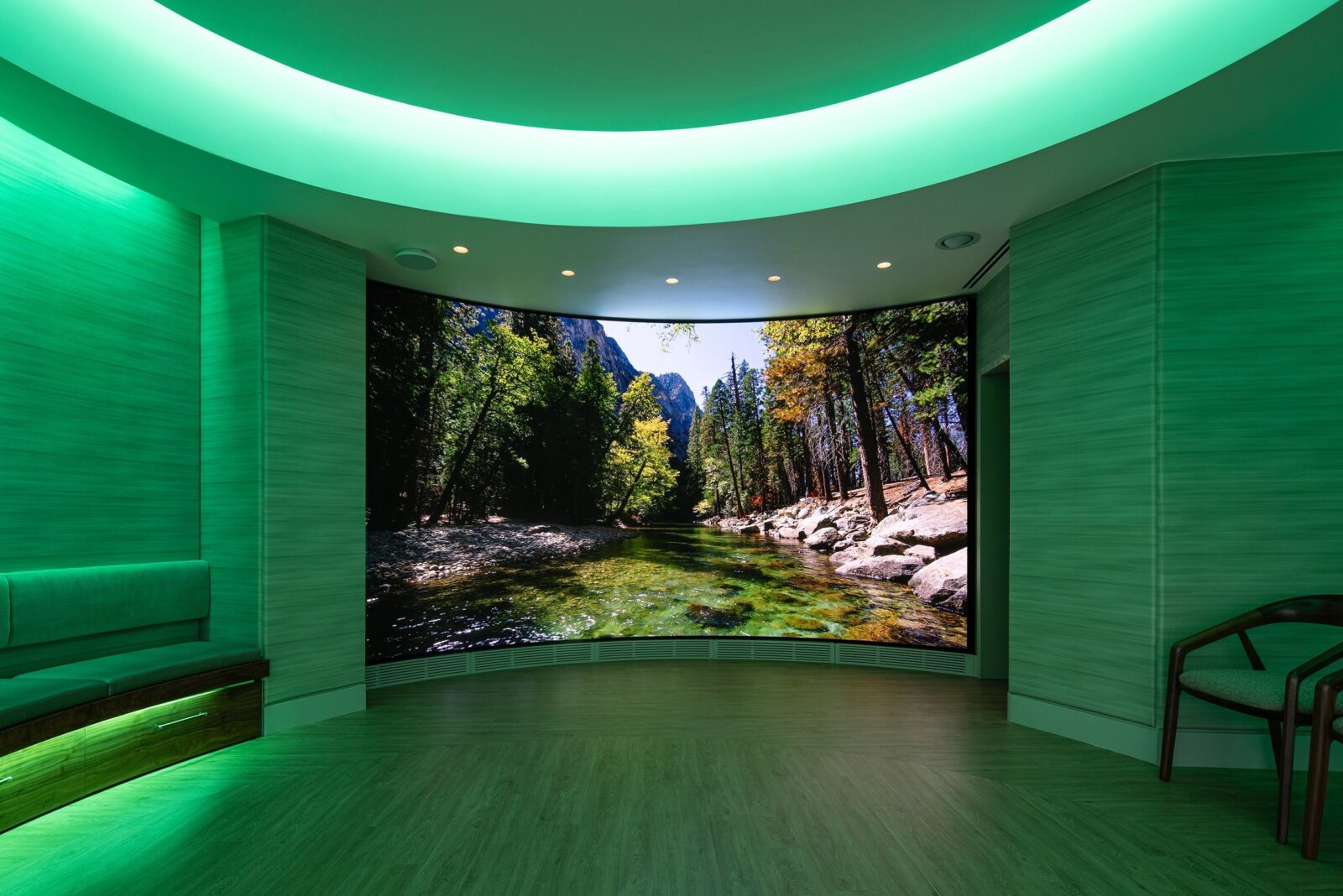
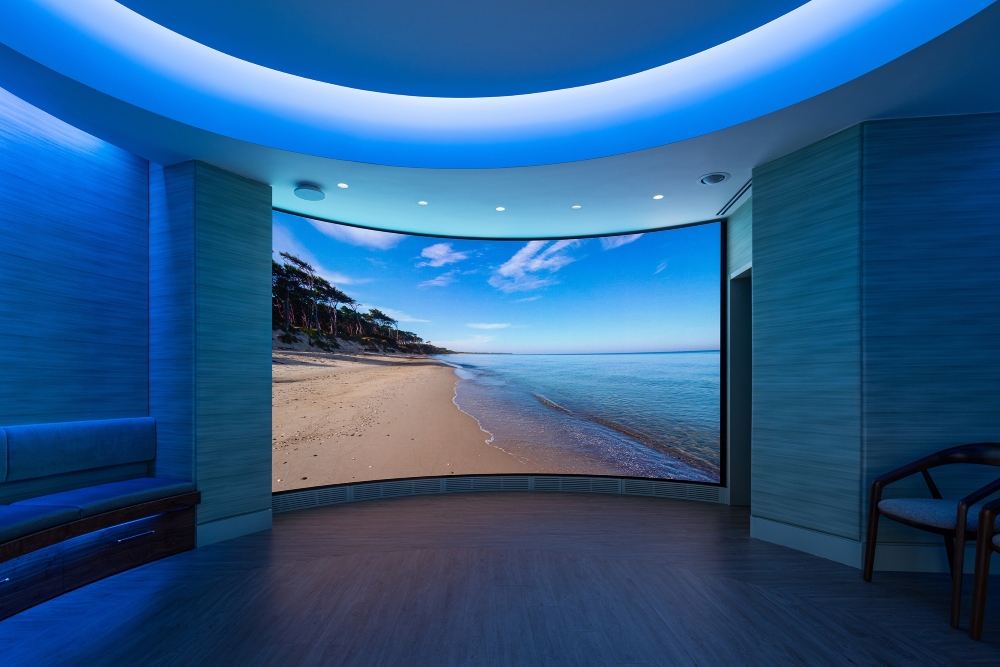
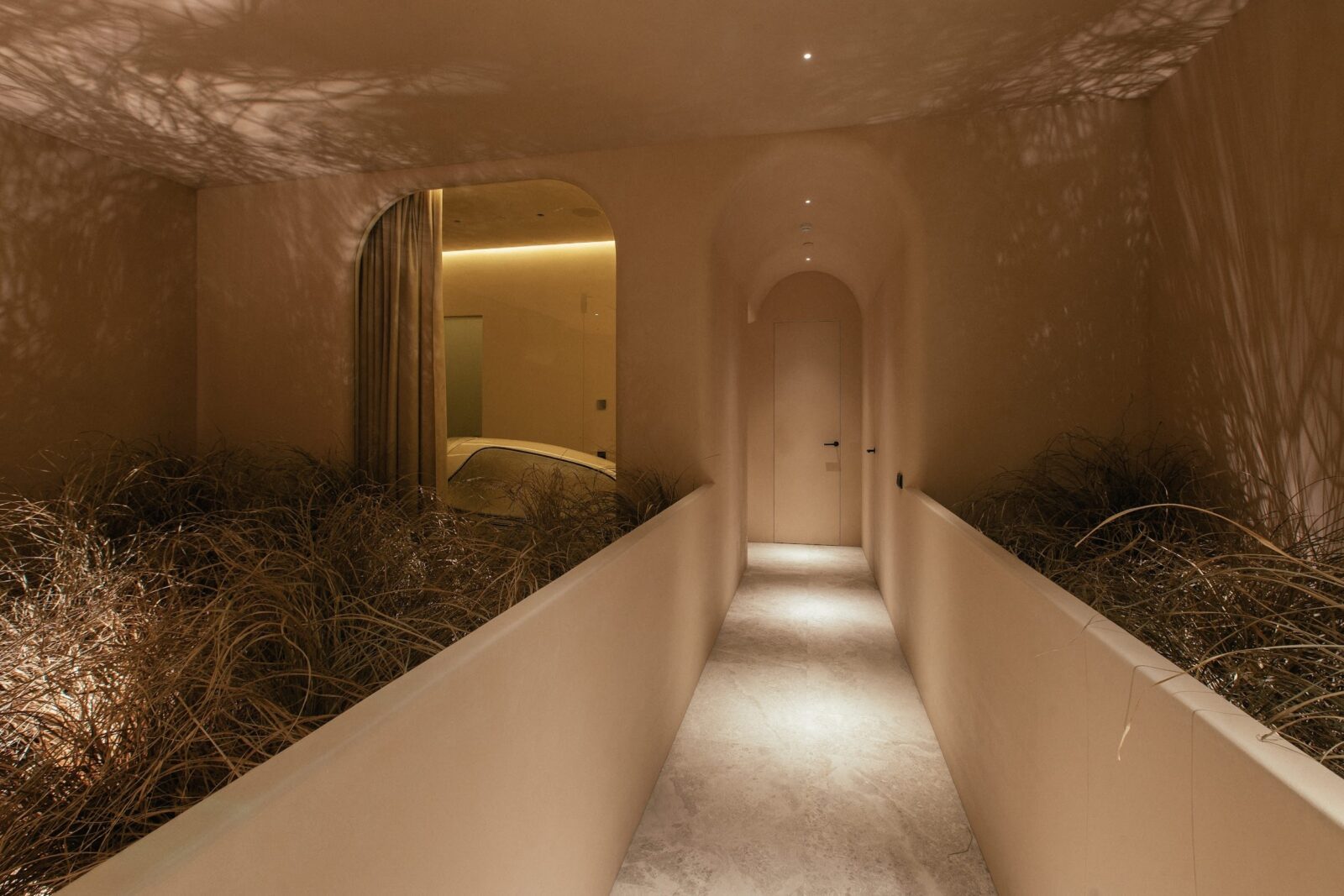
The light that guides
Similarly, ISKRA design used the AAA concept (Atmosphere, Architecture, and Activity) to create a soothing oasis in Body Aesthetic Studio Bel Corpo. The designer used uplights and fresh grass on the ceiling to make shadows reminiscent of warm summer evenings. The light spots along the corridor walls mark the route to the wellness rooms. The Joe C. Wen & Family Center for Advanced Care at UC Irvine Hospital had adopted the concept of healing flow, inspired by the San Joaquin march located right next to the hospital. The soft brightness gradient at the entry is followed by hidden façade accents and under-bench light that extend to the base of the building, helping visitors find the main entry. The center harvests occupancy and astronomical time to minimize lighting use, which brings us to another innovative use of light – sustainability.
Upcycling and biocomposites
Traditionally, lighting fixtures are made from metal, wood, ceramic, glass, and plastic. But today, the industry is employing sustainable natural materials, such as biocomposites made from by-products or waste (such as egg shells, coffee grounds, seashells, and wood waste). For instance, Biohm’s handmade lampshades are made of organic remnants of roasted coffee beans and orange peels. Light-emitting bacteria that naturally produce light through bioluminescence are also a popular choice. Bioluminescence takes place when a molecule luciferin comes in contact with oxygen to produce light. Some species already have bundles of luciferin and oxygen that create light when in contact with a certain ion (usually calcium). Bioluminescence is found in many marine organisms, including bacteria, sea stars, fish, worms, and jellyfish. Designers such as Teresa Van Dongen are using bioluminescent bacteria to create bacterial lamps, while a Paris start-up, Glowee, utilizes bacteria such as Aliivibrio fischeri to illuminate shop windows.

What the Future Holds
Designers and scientists continue to discover innovative ways to harness the potential of light, transforming it from a simple source of illumination into a vital element of health, sustainability, and emotional well-being. From circadian lighting that aligns with our biological rhythms to bioluminescent designs inspired by nature, modern lighting fixtures are reshaping how we live, work, and heal. As our understanding of lighting deepens, its integration into everyday life will only become more common and personalized.


